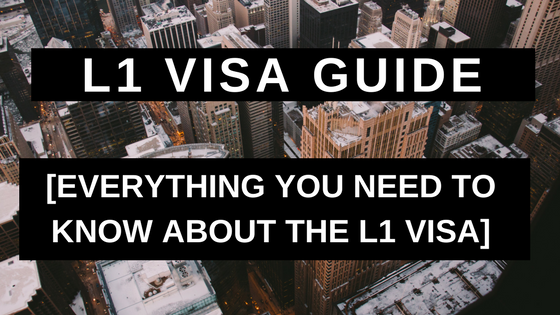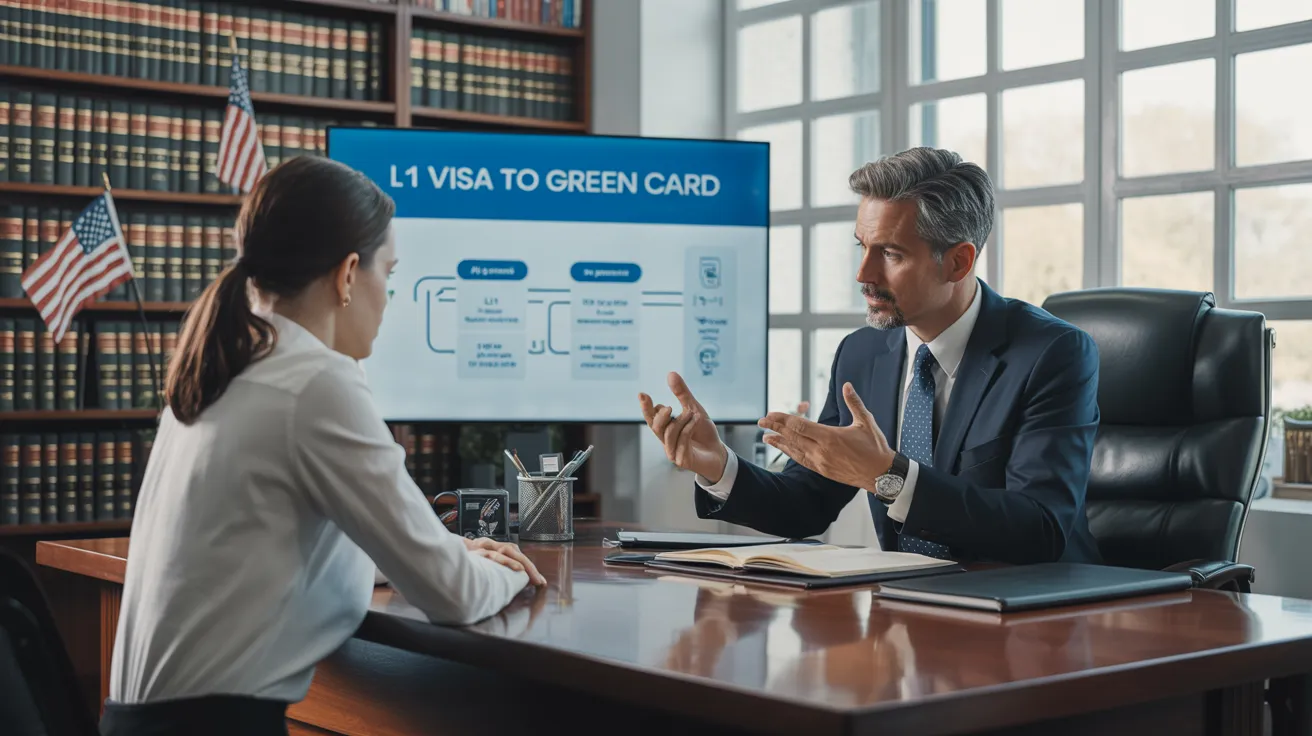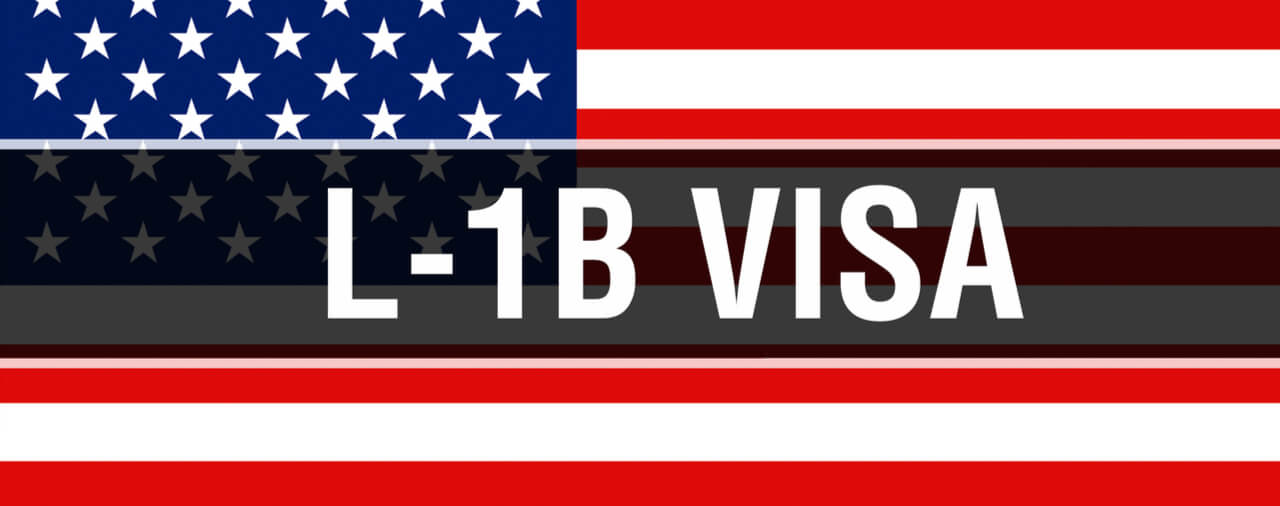Every little thing You Required to Learn About the L1 Visa: Benefits, Needs, and Much more
The L1 Visa works as a crucial device for international firms seeking to transfer employees to the United States, helping with both functional efficiency and the transfer of specialized expertise. With distinct categories for execs and specialized professionals, this visa provides many benefits, including prospective pathways to long-term residency. Nonetheless, comprehending the qualification needs and application process is crucial for a successful shift. As we examine the intricacies of the L1 Visa, it ends up being clear that steering its complexities is critical for organizations intending to leverage international talent properly. What challenges might you come across in the process?
Overview of the L1 Visa

Types of L1 Visas

Several sorts of L1 visas provide to the diverse requirements of multinational companies seeking to transfer employees to the United States. The two key groups of L1 visas are L1A and L1B, each made for particular roles and responsibilities within an organization. L1 Visa Requirements.The L1A visa is planned for managers and execs. This group allows business to transfer people who hold supervisory or executive positions, enabling them to manage operations in the U.S. This visa is valid for an initial period of up to 3 years, with the opportunity of extensions for an overall of approximately seven years. The L1A visa is especially advantageous for business looking for to develop a solid leadership visibility in the united state market.On the other hand, the L1B visa is designated for employees with specialized understanding. This includes individuals who have advanced knowledge in specific areas, such as proprietary modern technologies or unique processes within the business. The L1B visa is likewise legitimate for a first three-year duration, with expansions offered for as much as five years. This visa group is ideal for business that need staff members with specialized skills to boost their procedures and preserve a competitive edge in the U.S.Both L1A and L1B visas permit double intent, implying that visa holders can obtain long-term residency while on the visa. Understanding the differences in between these two categories is crucial for services planning to navigate the intricacies of staff member transfers to the USA successfully
Eligibility Needs
To receive an L1 visa, both the company and the employee have to satisfy particular qualification requirements established by united state migration authorities. The L1 visa is created for intra-company transferees, enabling international firms to move staff members to their united state offices.First, the employer should be a certifying organization, which indicates it should have a moms and dad business, branch, subsidiary, or associate that is working both in the united state and in the foreign nation. This connection is essential for demonstrating that the worker is being moved within the exact same corporate structure. The employer needs to likewise have actually been doing organization for a minimum of one year in both locations.Second, the employee should have been used by the international business for a minimum of one continual year within the three years coming before the application. This work must remain in a supervisory, exec, or specialized knowledge capability. For L1A visas, which accommodate supervisors and executives, the worker must show that they will certainly continue to operate in a similar ability in the united state For L1B visas, meant for employees with specialized expertise, the private have to possess one-of-a-kind know-how that contributes substantially to the firm's operations.
Application Process
Maneuvering the application procedure for an L1 visa involves several necessary steps that need to be finished precisely to assure a successful result. The very first step is to figure out the suitable classification of the L1 visa: L1A for supervisors and executives, or L1B for workers with specialized knowledge. This distinction is substantial, as it affects the paperwork required.Once the category is identified, the united state company need to file Type I-129, Application for a Nonimmigrant Worker. This form ought to include thorough details concerning the firm, the worker's role, and the nature of the job to be carried out in the U.S. Accompanying documentation normally includes proof of the partnership between the united state and international entities, proof of the employee's credentials, and information regarding the work offer.After entry, the U.S. Citizenship and Immigration Services (USCIS) will examine the application. If authorized, the worker will certainly be alerted, and they can after that make an application for the visa at an U.S. consular office or embassy in their home nation. This involves finishing Kind DS-160, the Online Nonimmigrant copyright, and setting up an interview.During the interview, the applicant has to offer various documents, consisting of the authorized Kind I-129, evidence of work, and any type of extra supporting evidence. Complying with the meeting, if the visa is provided, the staff member will certainly get a visa stamp in their copyright, allowing them to enter the united state to benefit the funding company. Proper prep work and thorough documentation are vital to steering this process effectively.
Advantages of the L1 Visa
Among the noteworthy advantages of the L1 visa is its capability to facilitate the transfer of key employees from global workplaces to the United States. This visa is particularly advantageous for international companies seeking to keep consistency in procedures and management across borders. By allowing executives, managers, and specialized workers to operate in the U.S., organizations can guarantee that their most crucial talent is available to drive service objectives.Another considerable advantage of the L1 visa is its relatively uncomplicated application process contrasted to other job visas. Organizations can petition for the L1 visa without the demand for a labor qualification, which streamlines the employment of international workers. Additionally, the visa can be approved for a first period of as much as three years, with the possibility of expansions, promoting long-term assignments.The L1 visa additionally provides a course to permanent residency. Workers on L1A visas (for managers and executives) can make an application for a Permit after one year, accelerating their modification to irreversible status. This attribute is an eye-catching reward for talented people searching for stability in the united state workforce.Additionally, L1 visa owners can bring their prompt member of the family to the U.S. under L2 status, allowing partners and children to stay and research in the nation, enhancing the general charm of this visa classification. On the whole, the L1 visa functions as a necessary device for global businesses, fostering cross-border collaboration and skill movement.
Usual Difficulties
While the L1 visa provides numerous benefits for multinational firms and their staff members, it is not without its obstacles. One significant obstacle is the rigorous documentation and eligibility demands enforced by the united state Citizenship and Immigration Services (USCIS) Firms must provide in-depth evidence of the international worker's certifications, the nature of the organization, and the qualifying connection between the U.S. and international entities. This process can be taxing and may need legal experience to browse successfully.Another challenge is the possibility for examination throughout the application process. USCIS policemans might examine the legitimacy of business procedures or the employee's role within the organization. This analysis can bring about delays and even denials of the copyright, which can greatly affect the company's functional strategies and the employee's occupation trajectory.Furthermore, the L1 visa is connected to the sponsoring company, which means that work modifications can make complex the visa status. If an L1 visa holder wishes to change employers, they must frequently seek a different visa classification, which can add intricacy to their migration journey.Lastly, preserving compliance with L1 visa policies is vital. Employers have to guarantee that their worker's role lines up with the initial request and that business proceeds to fulfill the qualification requirements. Failing to do so can cause retraction of the visa, influencing both the staff member and the organization. These challenges require complete prep work and recurring management to assure a successful L1 visa experience.
Tips for Success
To effectively browse the L1 visa process, thorough prep work is crucial. Beginning by extensively recognizing the particular requirements for the L1 visa classification you are requesting, whether L1A for managers and execs or L1B for employees with specialized knowledge. Gather all needed paperwork early at the same time, including proof of your work history, organizational framework, and the nature of the company operations.Engage legal advice experienced in migration law to lead you through the ins and outs of the application. A lawyer can assist ensure that your application is total, accurate, and engaging. They can also assist in planning for possible demands for evidence (RFEs) by proactively resolving areas that may raise questions.Additionally, keep clear interaction with your company, that have to offer important assistance for your application. L1 Visa. Validate that they understand their obligations, including filing the required petitions and giving paperwork that substantiates your role in the organization.Prepare for the visa interview by exercising responses to typical inquiries concerning your professional history and the nature of your work. Showing self-confidence and clearness can considerably impact the outcome of your application
Often Asked Inquiries
Can Family Members Accompany L1 Visa Holders?
Yes, family members can go along with L1 visa holders. Spouses and unmarried children under 21 years of ages are qualified for L2 visas, which allow them to live and study in the United States throughout the L1 holder's stay.
How Much Time Can L1 Visa Holders Keep in the U.S.?
L1 visa holders can originally stay in the united state for approximately 3 years (L1 Visa). This period may be extended, permitting an optimum keep of 7 years for L1A visa holders and 5 years for L1B visa holders
Is the L1 Visa a Double Intent Visa?

Can L1 Visa Holders Get a Permit?
Yes, L1 visa owners can make an application for an eco-friendly card - L1 Visa. The L1 visa sustains dual intent, enabling owners to pursue irreversible residency while maintaining their non-immigrant standing, assisting in a smoother changeover to a copyright
What Happens if an L1 copyright Is Denied?
If an L1 copyright is refuted, the candidate might obtain a notification detailing the factors for denial. L1 Visa Requirements. They can appeal the choice, reapply, or discover alternative visa alternatives depending upon their situations and qualifications
Verdict
In recap, the L1 Visa functions as a crucial instrument for multinational firms looking for to move employees to the USA. Comprehending the distinctions between L1A and L1B categories, together with the qualification needs and application processes, is important for effective navigating of this non-immigrant category. The benefits L1 Visa attorney provided, consisting of streamlined applications and pathways to long-term residency, better enhance its allure. Resolving common obstacles effectively can result in an extra desirable end result in the copyright procedure.